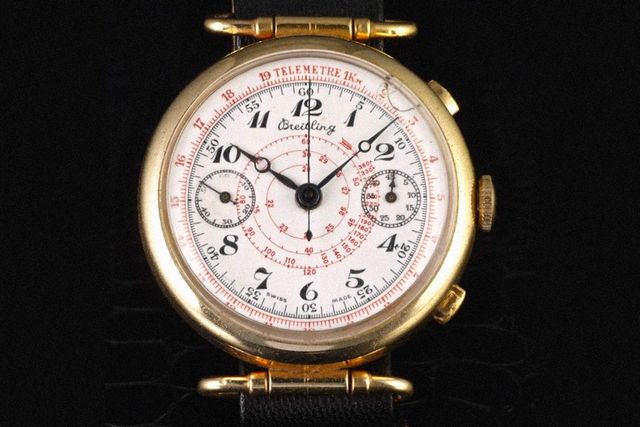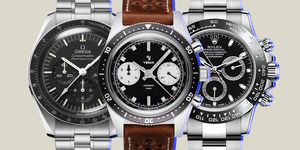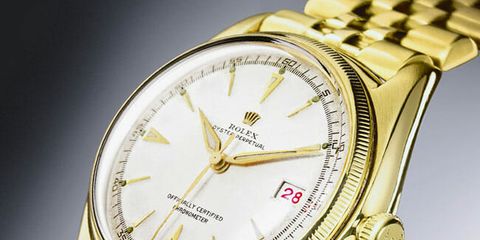Welcome to Watches You Should Know, a biweekly column highlighting important or little-known watches with interesting backstories and unexpected influence. This week: the Breitling No. 100 Chronographe-Compteur.
The undeniably captivating look of a chronograph watch (a watch with an integrated stopwatch feature) stems from its functionality: its busy face is crammed with dials and scales, and two buttons protruding from the case side tell you that this is basically a steampunk computer. Those features make chronographs sporty, technical and immediately recognizable, and they're taken for granted today — but that wasn't always the case.
The modern chronograph was born in 1934 when Breitling introduced the first example to feature two case side pushers (buttons), which separated the stop/start function from the reset. This may not sound like a big deal, but like the simple 3 o'clock date window that Rolex introduced in 1945, modern watches would be almost unimaginable without it.
Even today, there are different kinds of chronograph watches with different takes on integrating the stopwatch function — and aesthetic interpretations are legion. But the overwhelmingly common and archetypal form features two or three subdials and two pushers flanking the crown on the right side of the case — and this was Breitling's contribution.
As many watch wearers know, to operate a standard modern chronograph you press the 2 o'clock pusher to start it and the seconds hand begins to move. After a full 60-second cycle, you'll see the minutes begin to rack up in one of the subdials, often followed by hours in another. You stop the chronograph with the same 2 o'clock pusher, and reset it to zero with the 4 o'clock pusher. All the while, the main time display is unaffected.
Breitling introduced its two-pusher chrono at a time when most only used a single pusher integrated into the crown that performed all three functions: start, stop and reset. (Nowadays we call that kind of chronograph a monopusher.) However, Breitling had been working on improving this system for decades with incremental technological innovations.
In 1915, the company introduced one of the first wristwatches that separated the pusher from the crown, placing it at 2 o'clock. Then, in 1927, the brand released a pocket watch that separated the start/stop function (placing it at 2 o'clock) from the reset function (integrated into the crown at 3 o'clock) — in retrospect, one can see the modern chronograph beginning to take shape.
But why was it such a big deal to simply separate the functions? Some might even argue that the resulting look is less clean and elegant. Besides being visually balanced (and cool-looking), separating the reset function adds the ability to pause the chronograph and restart it without resetting it. Watchmakers and consumers have found this to be the preferred system ever since.
Despite its status as the first "modern chronograph," the No. 100 has an antiquated look from a 21st-century perspective — like it's made to accompany a sextant and a brass telescope for navigating your airship. It features both a telemeter on the dial's periphery for measuring distance and a tachymeter as a spiral shape in the dial's center for measuring speed. An early Breitling ad says it was intended for "industry" or sports like soccer.
Along with this important but often overlooked contribution to watchmaking, Breitling also made cockpit instruments for airplanes, and later, chronograph watches especially for pilots. Breitling today is known for its chronographs and pilot's watches in particular, but the company's role in developing the modern chronograph gives that reputation a lot more credence.




















